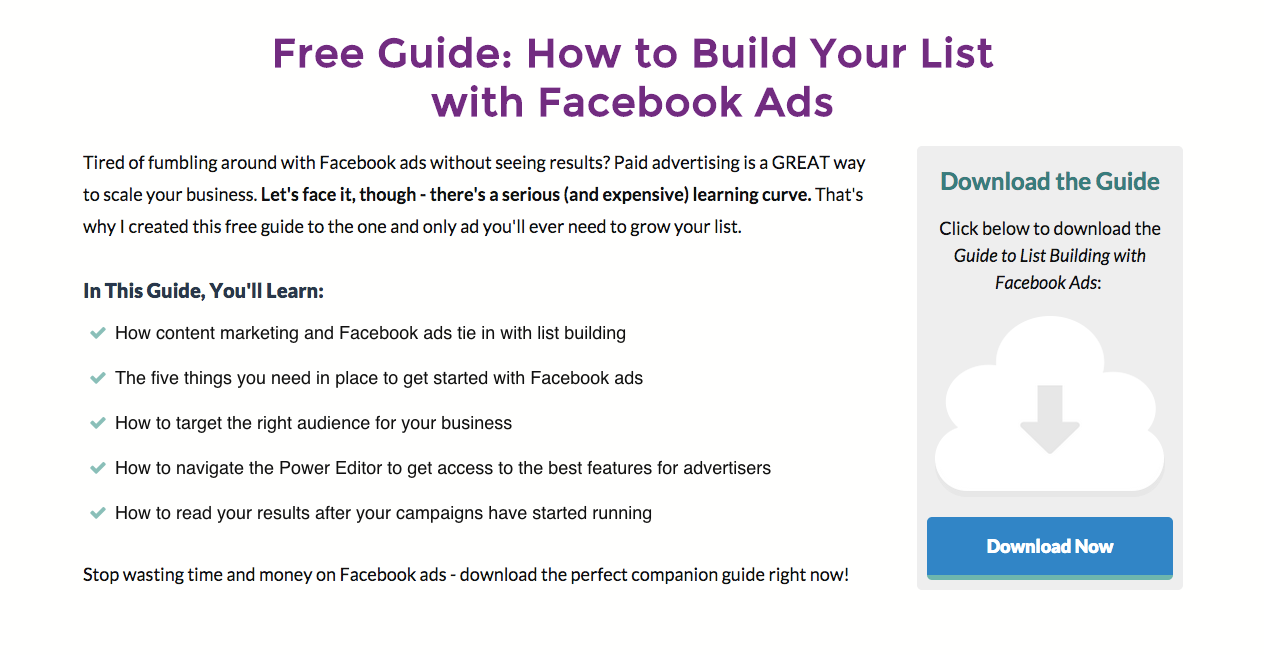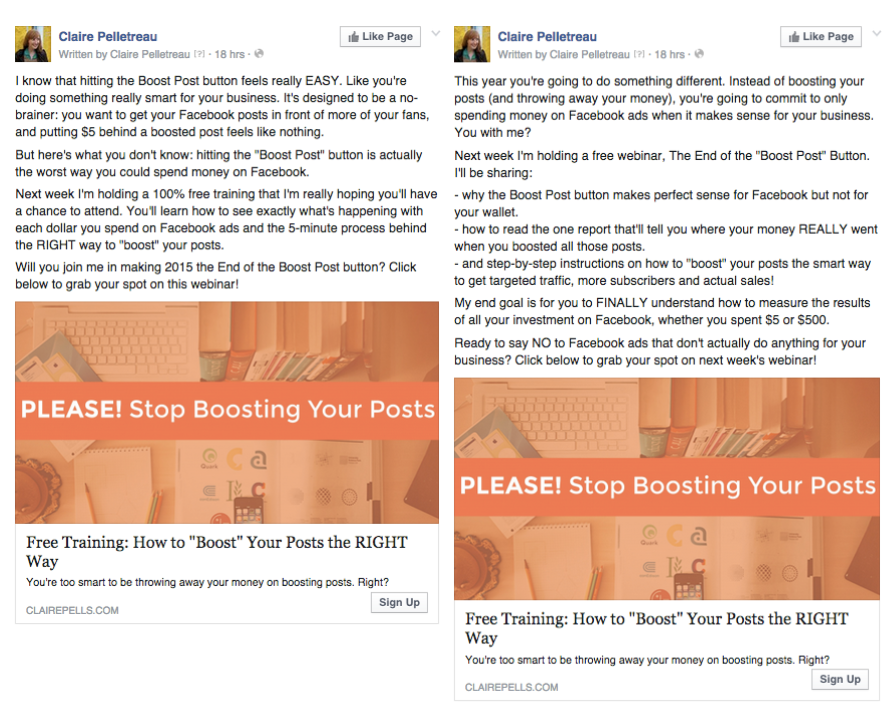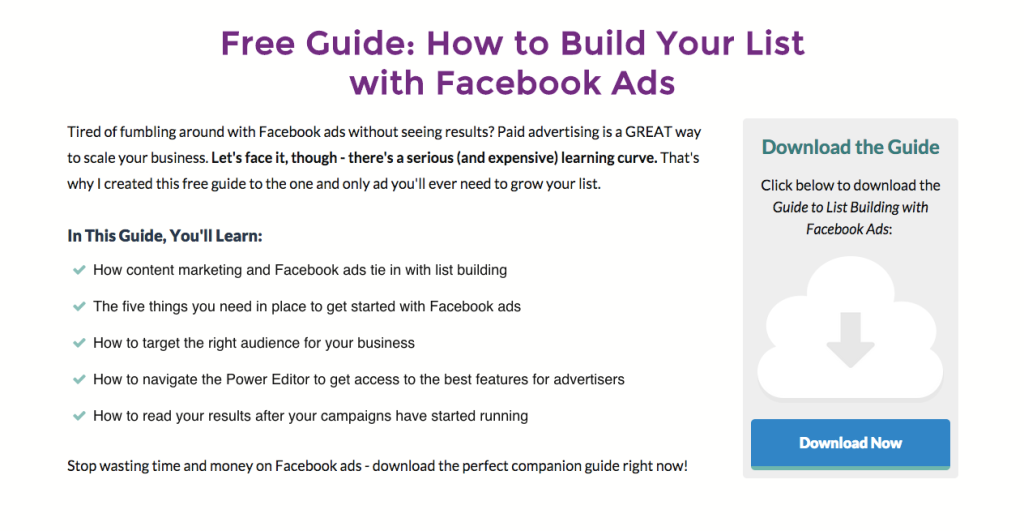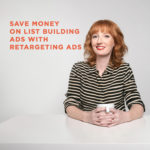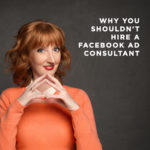While perusing one of the Facebook groups I’m in, I recently came across this request for help:
“Would love some advice – how do you deal with the inevitable ‘Unsubscribe’ when you start mailing your list weekly content? I’m gaining more than I’m losing, but it still stings.”
I smiled instantly – I had just jumped back in time to my recent obsession with this very issue.
I’ve been growing my list for just over a year – my first subscriber outside of my circle of friends and family signed up on January 10, 2014. (Hi Pau!) And in the beginning, I rarely noticed if anyone had unsubscribed.
Fast forward to today: I currently have 1,346 subscribers, and 265 other people have been on my list and opted out at some point in the last year.
That’s 19.69%. A huge chunk of my list, right?
Maybe. But here’s the reality:
The more people you reach every week or month with your newsletter, the higher the number of people that will hit that “unsubscribe” button. It’s a fact of life business. And it happens even more when you’re running Facebook ads.
I teach my Absolute FB Ads crew to use ads to promote their free content, the same way I do with my free guide. The strategy is to get on your potential customers’ radar, attract them to sign up for your list with a great “freebie,” and then keep them interested by consistently sending out your blog posts and/or newsletters.
But some people will always jump to get your free PDF/training/video series/checklist, but would be happy to never hear from you again. Lots of people receive ALL their email in one inbox. Between you, me, Ann Taylor, Groupon and every other list they’re on, they’ve got 9,274 unread emails to deal with. I would unsubscribe from your list too if that’s what I faced every time I opened Gmail.
Or maybe people have grown out of you. Do I really believe that all 1,346 people on my list are actively running Facebook ads? That they’re dying for weekly tips on optimizing their campaigns? NOPE. So it’s natural for people who simply aren’t benefiting from my emails to choose to receive one less marketing message per week. No worries – I do the same thing.
“But I’m investing money and/or time to get these subscribers – I don’t want to lose them!”
I hear you. And there are a few things that you can do both before and after someone gets on your list to decrease your unsubscribe rate. For example:
1. Make sure your free content matches up with what you plan to be emailing them about in the future. If your blog posts are all about eating green, why is your free video training about reducing stress? Yes, I know those two things both fit into the Health and Wellness arena, but the aren’t tied closely enough. I could use some tips on reducing stress or being more positive in my life, but I don’t want to hear about the power vegetables that will make my hair shinier. So if I sign up to learn one thing, I might get off your list if you teach me about another.
(Do you see the irony of what I just said? You might have gotten on my list to learn how to run Facebook ads, and now I’m talking about maintaining a healthy email list. And you might decide to unsubscribe as a result. But no worries! More on that in a second.)
If you’re not sure how to attract the right people to your list, you need to check out my favorite branding expert, Hélène Scott, and her brand new program, the BOP Collective. She’ll get you and your opt-in content straightened out in no time. (She’s a genius. For reals.)
2. Use longer copy in your Facebook ads. When you’re trying to grab someone’s attention AND include a call-to-action in just one or two lines of text, there’s no room for personality. There’s no room for clarification. There’s no room to subtly imply who will truly benefit from hanging out on your list and who shouldn’t bother.
I’m about to host a webinar to try to get people to stop using the Boost Post button. Writing the ad copy continues to be my least favorite part of running ads, but I knew that this time I had to use more text to get higher quality subscribers onto my list.
(Lots of people believe that Facebook ads will lead to them becoming millionaires overnight – I do NOT want them getting on my list since they’ll just unsubscribe as soon as they see how much work is involved.)
So right now I’m testing out these two ads:
There’s not much in that copy that says “don’t sign up, scammy marketer-in-training.” But it has a certain tone. It’s a preview of what my weekly emails and blog posts are like. And if you don’t dig it, hopefully you won’t click.
3. Drive people to a longer landing page. I have mixed feelings about this one, but some of my clients purposefully use a long form landing page with lots of text on it. Their hope is that only the RIGHT people will end up on their list.
I see the logic behind this; it’s similar to my recommendation about using longer copy in your ad text. But you have to be aware of your conversion rate: out of all your visitors, fewer people will sign up on a longer landing page. It’s a conversion optimization rule of thumb.
“So what if I’m getting more conversions if lots of them will eventually unsubscribe?”
That’s a fair point, but I firmly believe that no matter how much you “vet” your subscribers by giving them a long landing page to read, some people are always going to unsubscribe eventually. That’s why I like to use a shorter landing page with ready-to-digest bullet points like this one:
It’s been converting at 50-60% since last year.
4. Email your list consistently. You might think that by emailing people once a week, you’re “bothering” them. Maybe people will unsubscribe less if you don’t contact them too often, right? Wrong.
Check out the original question I started this blog post with:
“Would love some advice – how do you deal with the inevitable ‘Unsubscribe’ when you start mailing your list weekly content? I’m gaining more than I’m losing, but it still stings.”
She pointed out one of the problems with emailing irregularly: when you go from sparse communication with your subscribers to a lot more contact (like during a launch, for example), some people won’t like it and will invariably unsubscribe.
If, however, your subscribers get used to hearing from you early on, you’ll actually train them to expect your weekly emails.
5. Send out high quality, “valuable” messages. I’ve been on Marie Forleo’s list for a couple of years now. I almost never, ever open her emails. Why? Because I know what’s in them: a link to the latest episode of MarieTV. I don’t think I’ve watched an episode in a while, but I won’t unsubscribe. I know that what’s in her emails is quality stuff, and I want to continue to receive it. Some day the topic of her episode will pertain to something I’m struggling with at that very moment.
The catch-phrase of the past few years has been “provide value.” I didn’t get what that meant until I started blogging consistently in May 2014. How can you provide value to your subscribers?
Be ridiculously useful.
Write in-depth how-to articles, record fascinating podcast episodes, share an amazing story on your blog, or give away a template for the system that has completely transformed your business. Being useful means really helping your audience solve the problems they’re struggling with.
Yes, it’s impossible to be useful to EVERYONE, and you shouldn’t want to be!
There was one response to this question about getting over the “sting” of unsubscribes that really stood out on this Facebook thread. Small business lawyer Elizabeth Potts Weinstein had this to say:
I turned off notices for unsubscribes many years ago because it used to hurt my feelings. But now I think of unsubscribes as a person who realizes that I’m not a good match for them, and I’m happy that they have realized that and neither of us will waste any time trying to force it. Actually, if a bunch of people unsubscribe at once, I think of it as great because it means that I’ve clarified my message that much more, such that people are easily able to filter themselves out without any more help from me.
(Emphasis is my own.)
I loved this idea of not forcing it with anyone who’s not a good match. Especially when it comes to clarifying your message. I started my blog for people who need help with Facebook ads, but that’s actually too broad a group. I’m finally getting clearer on the group of people I can best serve: entrepreneurs who are looking to grow their list and who are willing to dig into metrics, play with Facebook ads, and test things out in order to achieve that growth.
Hence this post. Anyone unwilling to or unable to do this kind of work to build a targeted list is probably unsubscribing right now. Thank you for self-selecting!
If you do want to take steps towards keeping unsubscribes to a minimum, I would start with the tip #1 on the above list. Out of the five, making sure you’re offering the right free content is by far the most important.
Beyond that, re-read Elizabeth’s words and try to get comfortable with the idea of saying goodbye to someone who’s filtered herself out as a bad fit!
If you’ve got any other techniques for keeping the right people on your list, PLEASE leave them in the comments below! We could all benefit from different viewpoints on this sensitive issue. :)

